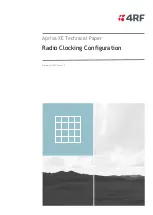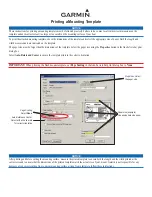
GX600D
INSTRUCTION MANUAL
PAGE 3
INTRODUCTION
Congratulations. You have just purchased one of the most
technically advanced VHF marine radios in the world.
The GME GX600D is a VHF FM radio designed to
operate in the 156 - 163 MHz marine band.
The GX600D has a number of enhanced features including
fully user programmable Channel Scanning, Dual Watch
and Triple Watch functions, a programmable ‘Instant’
channel memory and adjustable back lighting. In addition it
incorporates Digital Selective Calling and supports position
reporting when connected to a GPS receiver.
With its compact size and IP67 design it can easily be
installed into almost any panel mounting location in your fly
bridge or cabin.
The GX600D is totally designed at our Gladesville facility.
Precision robots and the very latest manufacturing
techniques ensure a consistently high quality is maintained
resulting in a communications system of extreme reliability
and performance.
Please read this manual thoroughly to ensure you get the
best from the GX600D’s features.
FEATURES
• Compact IP67 Design
• Selectable International, USA, and Canadian Channel Sets
• GPS position display when connected to a GPS
• Fully Compliant Class ‘D’ Digital Selective Calling
• Separate DSC Receiver
• Selectable USA Weather Channels
• Dual Watch and Triple Watch with Programmable
Priority Channel.
• 10 Private Channels available
• Programmable Channel Scanning
• Selectable Power 25/1 Watt
• Working Channel Memory
• Adjustable Digital Squelch setting
operators may choose to obtain a Marine Radio Operators
Certificate of Proficiency (MROCP), which covers the
operation of both VHF and MF/HF equipment.
Many TAFEs and marine organisations offer courses leading
to examination for the MROVCP and MROCP although
such courses are not compulsory. Persons wishing to obtain
the MROVCP or MROCP should first purchase a copy of
the Maritime Radio Operator Handbook which is essential
reading for every boat owner in Australia.
The Australian Maritime College (AMC) provides the marine
examination and certificate service on behalf of the ACA.
The AMC can provide the details of organisations and
individuals offering courses and or conducting exams.
For further information visit: www.amc.edu.au
DIGITAL SELECTIVE CALLING (DSC)
The Digital Selective Calling (DSC) feature on your GX600D
uses preformatted digital data messages instead of voice to
transmit urgent or important information to another radio.
DSC alerts all radios within range to a distress message
even when a listening watch is not being maintained.
This increases the chances of your signal being heard.
DSC is part of the Global Maritime Distress and Safety
System (GMDSS) which is expected to eventually replace
listening watches on distress frequencies and will be
used to announce all routine and urgent maritime safety
information broadcasts.
DSC AND GPS
DSC operation is enhanced by the addition of a GPS
receiver or chartplotter connected to your GX600D.
When a GPS is connected, your distress call can
automatically include your current position and time, while
a chartplotter will allow you to display the position of
another vessel. If a GPS is not connected, DSC calls can still
be sent and received to alert the operator of another vessel
for subsequent voice communication.
MARINE MOBILE SERVICE IDENTITY
(MMSI)
The MMSI is a 9-digit number used to identify a radio that
is capable of using DSC. The number is used to selectively
call other vessels.
To setup and use the DSC feature on your radio:
Please refer to the ‘Digital Selective Calling’ section on
page 8 of this manual.
NOTE:
You can still receive distress calls without a
user MMSI.
OPERATOR QUALIFICATIONS
Any person in Australia operating a VHF marine radio
should possess at least a Marine Radio Operators VHF
Certificate of Proficiency (MROVCP). Alternatively,




































